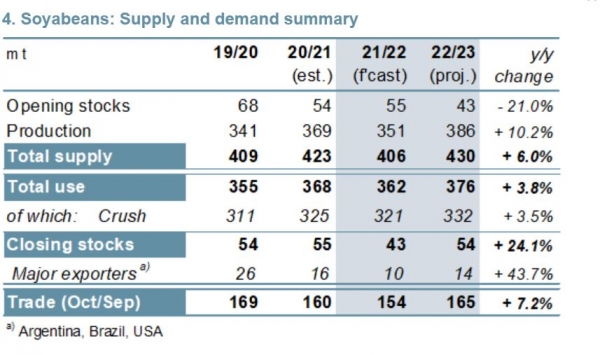IGC report: Tighter grains market but record soy output forecast

Total grains production for 2022/23 is forecast to fall by 2% to 2,252Mt, potentially the first contraction in five seasons, mainly to reflect drought stress in the EU, including for wheat, barley and corn (maize).
Amid tighter supplies, and anticipated elevated prices, total consumption could dip slightly on lower feed use, noted the IGC.
With a plunge in South American production only partly offset by gains elsewhere, global soybean output fell sharply in 2021/22, by 18m tons year on year (y/y), with consumption and import demand also set to retreat.
Linked to a sharp fall in exporters’ reserves, global soy inventories were significantly tighter, said the Council.
Record soy production anticipated
Tentatively assuming larger southern hemisphere soy harvests, the report predicts world soybean production will hit 386m tons for 2022/23 – that would be an increase of 10% y/y.
A recovery in both soy uptake and trade is also anticipated, led by gains in Asia, while carryovers could accumulate, including in key suppliers, said the IGC.
Grain export corridors
Ukraine export corridors are also dominating headlines, with reports of continued progress being made.
“However, until talks translate into meaningful exports, there will be ongoing doubts surrounding the feasibility and assurances for safe passage. Sanctions are again making headlines as the EU is set to alter its stance on Russian banks to ease food and fertilizer transactions and exports,” noted analysts at CRM Agri.
Those commodity market specialists also reported that large parts of the US have been dry and hot this week. But with rainfall forecast to arrive this weekend across large parts of the US corn belt and key spring wheat-producing regions, there is increasing confidence in those crops.












